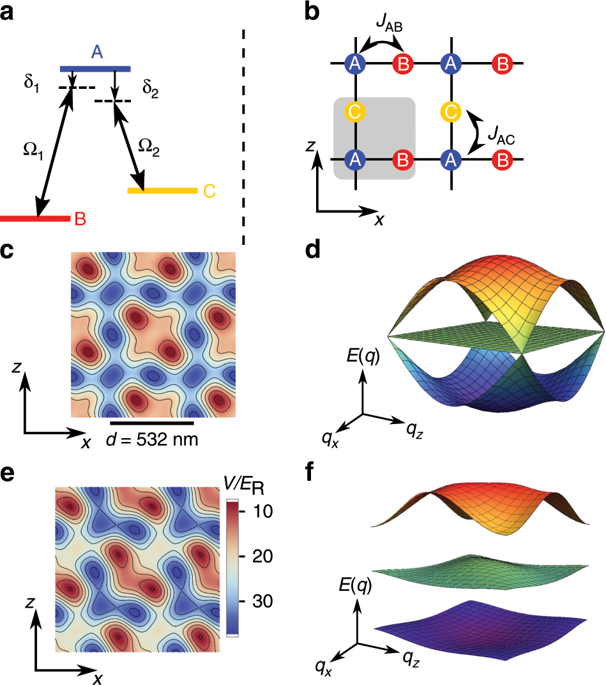当前位置:
X-MOL 学术
›
Nat. Commun.
›
论文详情
Our official English website, www.x-mol.net, welcomes your feedback! (Note: you will need to create a separate account there.)
Spatial adiabatic passage of massive quantum particles in an optical Lieb lattice.
Nature Communications ( IF 16.6 ) Pub Date : 2020-01-17 , DOI: 10.1038/s41467-019-14165-3 Shintaro Taie 1 , Tomohiro Ichinose 1 , Hideki Ozawa 1 , Yoshiro Takahashi 1
Nature Communications ( IF 16.6 ) Pub Date : 2020-01-17 , DOI: 10.1038/s41467-019-14165-3 Shintaro Taie 1 , Tomohiro Ichinose 1 , Hideki Ozawa 1 , Yoshiro Takahashi 1
Affiliation

|
Quantum interference lies at the heart of quantum mechanics. By utilizing destructive interference, it is possible to transfer a physical object between two states without populating an intermediate state which is necessary to connect the initial and final states. A famous application is a technique of stimulated Raman adiabatic passage, where atomic internal states can be transfered with high efficiency regardless of lossy intermediate states. One interesting situation is a case where the initial and final states are spatially well separated. Quantum mechanics allows a particle to move without practical possibility of being found at the intermediate area. Here we demonstrate this spatial adiabatic passage with ultracold atoms in an optical lattice. Key to this is the existence of dark eigenstates forming a flat energy band, with effective transfer between two sublattices being observed. This work sheds light on a study of coherent control of trapped cold atoms.
中文翻译:

Lieb光学晶格中大量量子粒子的空间绝热通道。
量子干扰是量子力学的核心。通过利用相消干涉,可以在两个状态之间转移物理对象,而无需填充连接初始状态和最终状态所必需的中间状态。著名的应用是受激拉曼绝热通道的技术,该技术可以高效地转移原子内部状态,而与有损中间状态无关。一种有趣的情况是初始状态和最终状态在空间上分离良好的情况。量子力学允许粒子移动而没有在中间区域发现的实际可能性。在这里,我们展示了在光学晶格中具有超冷原子的这种空间绝热通道。关键在于存在形成平坦能带的黑暗本征态,观察到两个亚晶格之间的有效转移。这项工作为对捕获的冷原子的相干控制进行了研究。
更新日期:2020-01-17
中文翻译:

Lieb光学晶格中大量量子粒子的空间绝热通道。
量子干扰是量子力学的核心。通过利用相消干涉,可以在两个状态之间转移物理对象,而无需填充连接初始状态和最终状态所必需的中间状态。著名的应用是受激拉曼绝热通道的技术,该技术可以高效地转移原子内部状态,而与有损中间状态无关。一种有趣的情况是初始状态和最终状态在空间上分离良好的情况。量子力学允许粒子移动而没有在中间区域发现的实际可能性。在这里,我们展示了在光学晶格中具有超冷原子的这种空间绝热通道。关键在于存在形成平坦能带的黑暗本征态,观察到两个亚晶格之间的有效转移。这项工作为对捕获的冷原子的相干控制进行了研究。



























 京公网安备 11010802027423号
京公网安备 11010802027423号